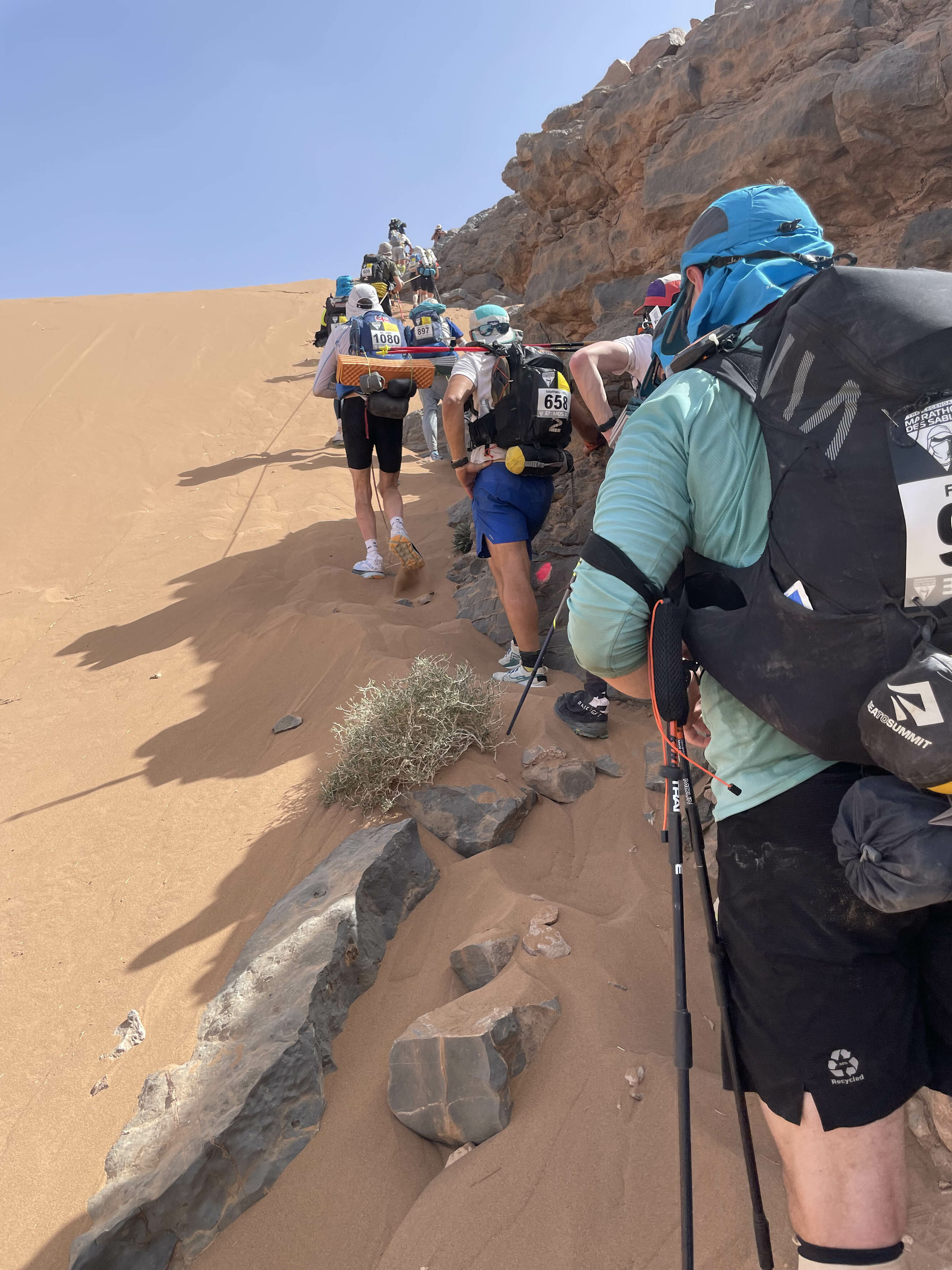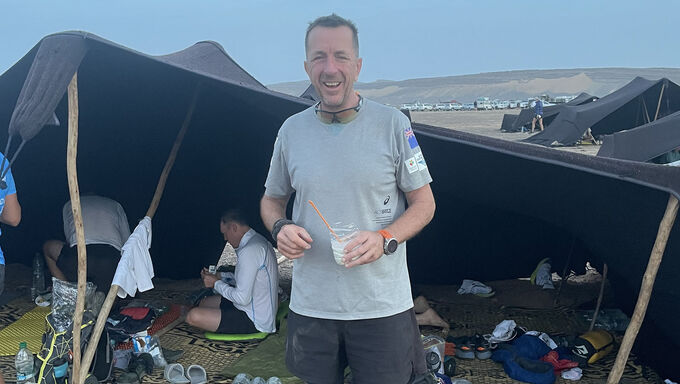The hardest foot race on the planet
02 Jun 2023
David Cartwright (9808) has unfinished business with the Sahara Desert.
Feet raw with blisters, he was forced to pull out of the gruelling 250 km ultra-marathon, Marathon des Sables, which he’d entered as a fundraiser for the New Zealand Flying Doctor Service.
Recently returned from running 130km of the scorching race, David has already paid his deposit for the next ultra-marathon in 2025.
With temperatures soaring to 52 degrees celsius, this year’s event had the third highest drop-out rate in the ultra-marathon’s 37 year history.
“I was gutted but it was the most sensible decision.
“The heat is almost impossible to describe. It’s similar to those moments where you open an oven door and that wave of heat hits you in the face. It was like that, but constant.
It’s a dry heat so you didn’t actually feel like you were sweating because it would evaporate immediately. But each evening, your clothes were like cardboard – stiff with salt.”
David says sleep deprivation was a major problem with eight people to a tent, and runners had to carry all their supplies.
“As a competitor, you carry everything you need for the race; food, emergency and mandatory equipment including a scorpion bite kit and compass, bedding – even toilet paper.
“I took a camera plus various ‘luxury items’ which meant my pack was about 1kg heavier than other competitors. That doesn’t sound a lot – but over the distance and conditions – I suspect it increased my fatigue.
“My fitness was fine. I’ve run similar distances before without issue. But for the particular event, next time, I’ll invest more time in better feet and climate preparation.”
Part of the run is managing your water intake which is rationed to 18 litres per person per day.
“The landscape was dry and barren with only the occasional bush or shrub. Temperatures that usually range between -3 degrees celsius at night to 45 degrees at midday were significantly higher with a maximum of 56 degrees recorded,” David says.

“This was partly due to a delayed start being several weeks later than normal due to Ramadan, plus a heat wave in Europe at the time. In previous years, competitors would have the relief of cooler nights. But this year, the temperature didn’t drop below 23 degrees.”
The race must be completed in seven days, with the longest day covering up to 90km and vertical climbs on two of the days.
The race is broken into six stages:
- Stage 1 – 36km (510m of vertical climb) to be completed within 10.5 hours
- Stage 2 – 31.7km (760m of vertical climb) to be completed in 10 hours
- Stage 3 – 34.4km (590m climb) to be completed in 10.5 hours
- Stage 4 – 90km (1330m climb) to be completed within 35 hours
- Stage 5 – 42.2km (650m climb) to be completed in 12 hours
- Stage 6 – 9km – not timed
David, a Christchurch-based retirement village manager, is a trustee of the New Zealand Flying Doctor Service and raised more than $10,000 for the charity. If you would like to contribute to his efforts, you can donate at https://givealittle.co.nz/fundraiser/toughest-foot-race-mds.






